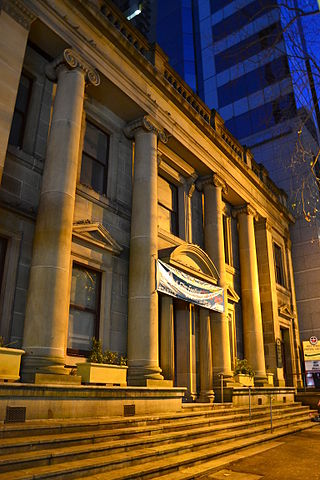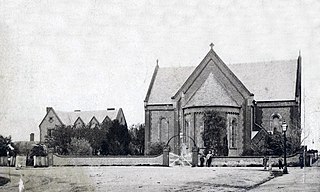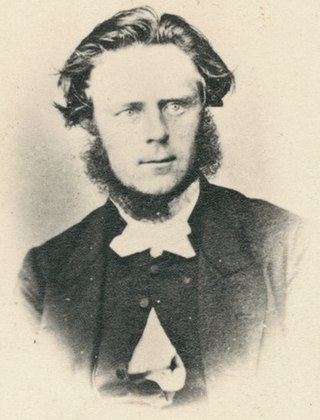
North Terrace is one of the four terraces that bound the central business and residential district of Adelaide, the capital city of South Australia. It runs east–west, along the northern edge of "the square mile". The western end continues on to Port Road, and the eastern end continues across the Adelaide Parklands as Botanic Road.

Norwood is a suburb of Adelaide, about 4 km (2.5 mi) east of the Adelaide city centre. The suburb is in the City of Norwood Payneham & St Peters, whose predecessor was the oldest South Australian local government municipality.

Rose Park is a suburb with a population of 1,374 in the South Australian capital city of Adelaide. It is located 1 kilometre (0.62 mi) east of Adelaide's central business district. Rose Park is a leafy, tree-lined and wealthy inner suburb containing a number of historical and contemporary attractions. Much of the area's 19th-century housing stock has been recognised with heritage protection.
Australian non-residential architectural styles are a set of Australian architectural styles that apply to buildings used for purposes other than residence and have been around only since the first colonial government buildings of early European settlement of Australia in 1788.

Adelaide Town Hall is a landmark building on King William Street in Adelaide, South Australia, Australia. The City of Adelaide Town Hall complex includes the Town Hall and the office building at 25 Pirie Street.
Edmund William Wright was a London-born architect in the colony of South Australia. He was mayor of Adelaide for 10 months in 1859.

Walter Hervey Bagot was a South Australian architect. He was one of the last great proponents of the traditional school of South Australian architecture. He founded Woods & Bagot in 1905.

The Pitt Street Uniting Church is a heritage-listed Uniting church building located at 264 Pitt Street in the Sydney central business district, Australia. Founded in 1833, the congregation was the original church of Congregationalism in New South Wales. The church building was designed by John Bibb and built from 1841 to 1846. It is also known as Pitt Street Congregational Church. The property is owned by The Uniting Church in Australia and was added to the New South Wales State Heritage Register on 2 April 1999.

Robert Thomas was a Welsh newspaper proprietor, printer and early settler of South Australia who was born on a farm 'Rhantregynwen', at Llanymynech, Powys, Wales.

Edward John Woods F.R.I.B.A. was a prominent architect in the early days of South Australia.
Edward Angus Hamilton was an architect and politician in colonial South Australia.
Alfred Wells was an architect in South Australia.

Pilgrim Uniting Church is a Uniting church located on Flinders Street, Adelaide in South Australia.
Thomas Henry Jones Mus. Bac. was a South Australian organist and music teacher.

Christ Church, North Adelaide is an Anglican church in North Adelaide, South Australia.

James Jefferis was an English Congregational minister with a considerable career in Australia.
Daniel Garlick was an architect in the early days of South Australia. During his lifetime, his architectural practice names were Garlick & Son and Jackman & Garlick. After his death his name was perpetuated by two rival firms: Garlick & Sibley and then Garlick, Sibley & Wooldridge; and Garlick & Jackman and then Garlick, Jackman & Gooden.

George Thomas Light, commonly referred to as G. T. Light, was an organist, instrument-maker, and architect in the early days of the British colony of South Australia.
Josiah Eustace Dodd was an Australian pipe organ builder, based in Adelaide.
William Harry Jefferis was an Australian-born architect who practiced principally in Perth and later in Albany in Western Australia.













